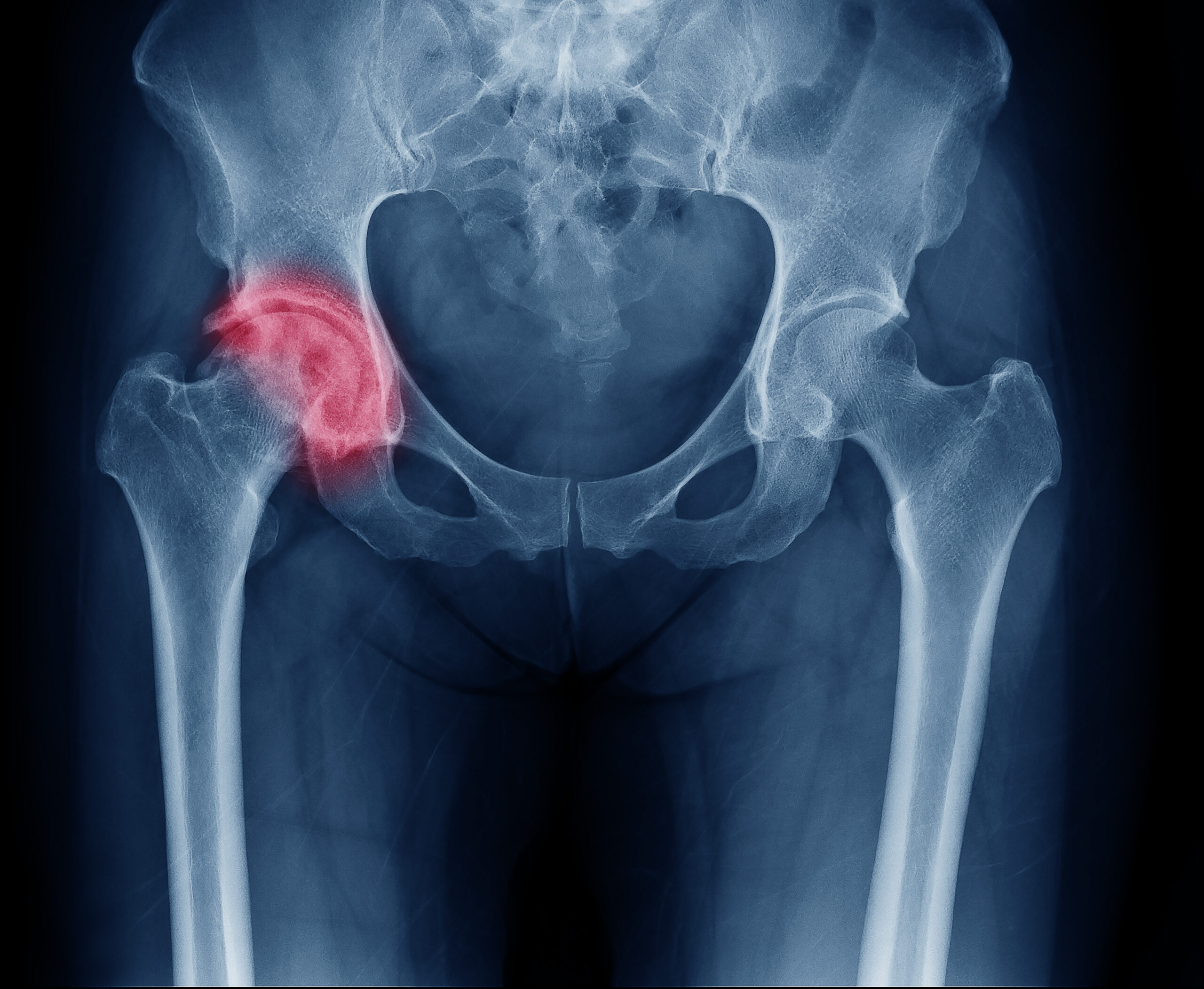Extreme Hip and Leg Pain: It’s All About Your Blood Pressure
Hypertension (high blood pressure) affects millions of people worldwide. Experts associate it with several serious health problems like heart disease, stroke, and diabetes. They even associate it with extreme hip and leg pain. And even though high blood pressure doesn’t directly cause extreme hip pain, experts can’t overlook it. It contributes in subtle ways.
Consider the medical discoveries of Atherosclerosis and Peripheral Artery Disease (PAD) over the decades. While they do not develop in everyone with high blood pressure, nonetheless, it’s still important to control your blood pressure.
Atherosclerosis is the constant pressure of blood (hypertension) against the artery walls, and it can damage their inner lining, making them more prone to plaque buildup. PAD is when some outside factor has somehow damaged or weakened the femoral artery and its branches. The femoral artery carries oxygenated blood to your lower extremities. Often, high blood pressure is the primary culprit. As a result, PAD can reduce blood flow to your legs and hips.
You can reduce the chances of developing these conditions and other serious health issues through healthier lifestyle choices, a proper diet, and other tools. However, the first step is to see a pain management specialist before embarking on some of these major behavior modifications.
Extreme Hip and Leg Pain Connected to High Blood Pressure
Experts refer to the actual pressure inside your arteries as “blood pressure.” And they consider approximately 120/80 (“120 over 80”) as medically “normal.” This measurement presents itself as possibly the healthiest measurement for combating extreme hip and leg pain. In this example, your systolic pressure is 120 and your diastolic pressure is 80.
Systolic is the pressure in your arteries when your heart beats, and diastolic is the pressure in your arteries “in between” heart beats. Put another way: Systolic blood pressure is the pumping and expanding of arteries for peak pressure, whereas diastolic blood pressure drops when the heart relaxes.
While blood pressure should not exceed 120/80, medical experts give ample leeway to many individuals. This is especially true considering everyone’s body is different (height, weight, metabolism). Many people need treatment if their blood pressure exceeds 130/80, yet many do not seek it.
If you have other medical conditions hampering your health, such as extreme hip pain, high blood pressure treatment might be good to consider. Through healthy lifestyle changes, you can lower your blood pressure. Consider exercising at least 150 minutes each week. If you smoke, get on a scheduled proactive plan to stop. Eat a balanced diet, including lots of fruits and vegetables, and minimize sodium and alcohol intake. Try maintaining a healthy weight and work-life stress.
You can also talk to your doctor about special blood pressure medication if needed.
What is Atherosclerosis, and How is it Related?
Atherosclerosis from high blood pressure means cholesterol, fat, and other substances can accumulate in your arteries, causing damage to the inner lining, plaque buildup, and eventually lower-extremity extreme hip and leg pain for many patients. Plaque is made up of fatty deposits and cellular waste.
Despite the fact high blood pressure is common in many individuals across the United States, do not be fooled — it’s not harmless. Besides adding pressure to the artery walls, high blood pressure can lead to Coronary Artery Disease (CAD), which is another risk, since blood cannot flow freely through your heart’s arteries. Blood vessels struggle to send enough blood, oxygen, and nutrients to your heart muscle, with outward symptoms including chest pain and shortness of breath. As a result, these blood vessels may become even more damaged, with plaque continuing to build up and causing arteries to narrow even more over the long term.
At a basic circulatory level, blood is pushed through your arteries into the entire body when your heart beats. Under high blood pressure, arteries throughout your body swell and stretch more than they would normally. In the long run, this stretching can damage the endothelium — the delicate lining of all arteries.
By keeping your blood pressure in a healthy range and protecting your endothelium from Atherosclerosis, you can actively prevent PAD and CAD, as well as extreme hip pain. An injured endothelium can lead to other concerns. It causes more low-density lipoprotein (or what circulatory specialists call “bad” cholesterol) and white blood cells to enter the arteries. Nobody should wish for a buildup of this cholesterol or fatty cells in their arterial walls.
Atherosclerosis Symptoms, Extreme Hip and Leg Pain, and Clots
There are typically no symptoms in the early stages of Atherosclerosis, which can be a tricky scenario to analyze for those suffering from extreme hip and leg pain. Whenever coronary arteries seriously restrict blood flow to the heart, you may feel chest pain, especially when exerting yourself or feeling angry or stressed.
To understand the symptoms of Atherosclerosis, it’s important to know which arteries are affected and how much blood flow is blocked. Symptoms other than chest pain include cold sweats, extreme tiredness, heart palpitations, shortness of breath, memory problems, weakness or numbness, and severe pain after eating.
Atherosclerosis can also cause extreme hip pain. When plaque hardens in and narrows the arteries, it reduces blood flow to your hips and legs. This lack of oxygen in your lower-side extremities can inflict pain, cramping, and fatigue. What’s really happening is blood clotting, also known as claudication.
With blood clots, the clot itself can completely block blood supply to an area. This blockage can eventually lead to multiple issues like tissue damage and gangrene if not addressed in due time. In conjunction with blood claudication, arthritis can also occur in your hips and legs as a result of Atherosclerosis. Cartilage that cushions the ends of your bones can be damaged due to reduced blood flow to your joints.
PAD Symptoms, Statistics, and Other Red Flags
When walking or exercising, Peripheral Artery Disease (PAD) — the buildup of fatty deposits — can cause extreme hip and leg pain, cramping, and fatigue in your calves and buttocks. Depending on the severity of the disease, PAD may even result in gangrene or tissue damage (similar to bad cases of Atherosclerosis).
Up to six out of ten people with PAD in the United States experience leg pain each year. The physical signs of PAD are usually muscle atrophy (weakness); hair loss; smooth and shiny skin or “cool skin”; a decline in vein pulse in your feet; ulcers or sores in your legs and feet that won’t heal; and cold or numb toes.
Injuries or infections in conjunction with PAD can cause serious complications, such as heart attacks, strokes, or Critical Limb Ischemia (severe blockage of arteries in the lower extremities). This can occur in patients with severe Occlusive Arterial Disease, where resting blood-flow cannot meet the tissue’s basic nutritional requirements. In some cases, patients experience numbness or cold sensations in the toes and feet, with symptoms usually occurring when the legs are horizontal at night, yet improving when they are in a dependent position during the day.
Overall, PAD patients are rarely symptomatic, but many can have a slow or impaired gait — an unusual manner of walking. Intermittent blood clotting, which occurs during exercise and is relieved by rest, is the most common symptom. Across the nation, more than 6.5 million people aged 40 and older have PAD — a concerning statistic in today’s health-conscience world.
Treatment for Extreme Hip and Leg Pain Starts with an Ultrasound
Seeing a pain management specialist, getting a proper diagnosis, and discussing treatment are important options to consider if you’re experiencing extreme hip and leg pain. A pain management specialist can help you get the most out of your treatment — in the right timing, in the right environment, and with the right tools.
Hip pain specialists diagnose and treat hip discomfort, achiness, and the irritation you are experiencing. Specialists and orthopedic surgeons can also treat patients with debilitating musculoskeletal conditions.
It all starts with a ten-minute ultrasound, which uses sound waves to scan the inside of your body’s pain points and other areas. The good news is, your hip is diagnosed using non-invasive tools, without any discomfort or pain. After applying gel to select areas, a sonographer will move a small device over those markers. Sound waves are emitted, bouncing off tissues and organs in your body.
By the end, specialists can see displayed images of your problem areas for a proper diagnosis and recommendation of the best course of treatment in your situation. Don’t let extreme hip pain impact your life any longer.
Wellness and Pain Can Help
A range of options for treating extreme hip and leg pain are available at Wellness and Pain. We offer conservative treatments, routine visits, and minimally invasive quick-recovery procedures. We can keep you free of problems by providing lifestyle education and home care advice to help you avoid and manage issues, quickly relieving the inhibiting lifestyle conditions when complications arise.
At Wellness and Pain, we personalize patient care plans based on each patient’s condition and unique circumstances to relieve pain, improve mobility and mental space, and improve your overall health.













